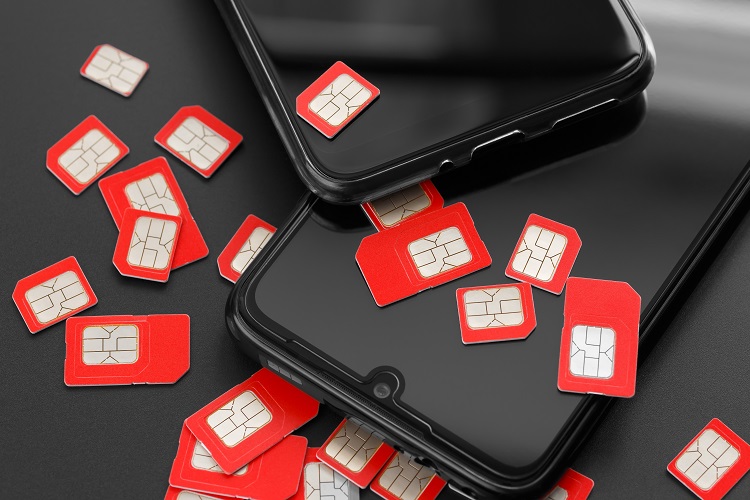 Two cell phones and a lot of SIM cards. The concept of fraud, deception, mass dialing.
Two cell phones and a lot of SIM cards. The concept of fraud, deception, mass dialing.
SIM vs. eSIM: The path to a flexible mobile future
20. June 2023 Published by Raphael DoerrIn the age of increasing networking and constant change in the mobile communications industry, traditional SIM cards have established themselves as the standard. But now a new revolution is on the horizon: the eSIM.
Traditional SIM cards, also known as Subscriber Identity Modules, are small, replaceable chips that are inserted into mobile devices to connect to cellular networks. They contain important information such as phone numbers, contacts and network operator data. The SIM card is used to assign and authenticate the respective mobile device to a mobile network. When the mobile device or provider is changed, the SIM card must be physically replaced to maintain the connection. This process can sometimes be cumbersome and requires handling of the small SIM cards.
eSIM: The future of connectivity
In contrast, the embedded SIM card, also known as eSIM (embedded SIM), offers a revolutionary alternative. The eSIM is an embedded chip that is permanently integrated into the device and contains all the necessary data. Instead of using a physical SIM card, the user can digitally select and activate the mobile carrier. This enables simple and fast activation as well as seamless switching between different providers and tariffs. The eSIM offers virtual flexibility and frees the user from physical SIM cards.
What are the advantages of an eSIM?
Flexibility: With the eSIM, users can easily switch between different mobile carriers and tariffs without having to exchange physical SIM cards. This is particularly convenient for travelers or business people who are frequently on the move in different countries.
Multiple profiles: Thanks to eSIM technology, devices can store multiple profiles, allowing users to efficiently separate their business and personal calls and data without having to change physical SIM cards or devices.
The Gigaset GX6 PRO smartphone also features the eSIM functionality. This brings numerous advantages with it. With the eSIM, business users can seamlessly switch between different mobile carriers depending on the requirements and tariffs that best suit their business. This means they no longer need to swap physical SIM cards or handle two devices. The eSIM also allows users to store multiple profiles on one device, which is ideal for separating business and personal communications. In addition, eSIM technology offers greater security as it is more tamper-proof than traditional SIM cards. The Gigaset GX6 PRO smartphone with eSIM functionality is thus an efficient and flexible solution for business requirements that saves both users and IT administrators time and effort while making communications smooth and secure. And it’s not just thanks to the eSIM functionality – the Gigaset GX6 PRO’s operating system also simplifies device management quite significantly. With Zero Touch and Team Viewer compatibility, IT managers can conveniently administer the GX6 PRO.
The GX6 PRO can be customized for company orders. Thanks to production in Germany, company logos, IMEI, department designations or other information can be engraved on the back of the device, even for smaller quantities. This increases employee identification with the company and can prevent theft. The GX6 PRO also comes with pre-installed software on request – from its own home screen to predefined apps or details on device management to a selection of background images and ringtones such as the company jingle.
 Comments
Comments

 en
en 







